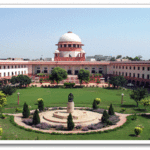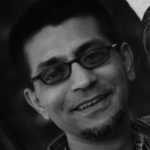A Four-part Journey Through South India in Search of LGBT life
Also see:
Islam and Homosexuality
Gay India Stories
Gay India News & Reports 2000 to present
Gay India Photo Galleries
Read this historic story first
Chennai (Madras)
Sahodaran and SAATHII
It’s no easier to find a publicly visible gay community in Chennai than Hyderabad but by scratching the surface (through Gay Bombay Yahoo Group) a visitor can discover there is much more queer life and energy in Chennai.
Further guided by the wisdom and advice of Ashok Row Kavi with his extensive contacts I found another well-known leader, Sunil Menon, a USA university educated anthropologist, fashion show designer and director of the award-winning NGO Sahodaran in Chennai.
 Sahodaran is essentially a health education outreach organization to the underclass and underserved community of male sex workers (MSWs) and wherever possible to their MSM and female customers in Chennai. Sahodaran also has an office in Pondicherry.
Sahodaran is essentially a health education outreach organization to the underclass and underserved community of male sex workers (MSWs) and wherever possible to their MSM and female customers in Chennai. Sahodaran also has an office in Pondicherry.
Sahodaran’s message is simple and clear: take care of yourself and others by practicing safe sex; use condoms and learn about HIV/AIDS prevention and treatment.
Starting in 1997 from that core mission, Sahodaran (http://www.sahodaran.faithweb.com/index.html–under construction) has enlarged to become a social center for these usually marginalized MSWs (virtually all males under 25) usually of lower class birth and minimal education.
“It’s not easy work to succeed with such an alienated population,” Sunil reflected, “not all boys can be saved. It partly depends on their family; how badly the boys have been treated. If the physical, emotional or sexual abuse (sometimes by priests as well) has been severe and a boy has become ‘uncivilized’—violent, anti-social, with no self-esteem, alienated, unable to work regularly, no self-control, (overall bad ‘karma’) then it’s not likely Saharodran can help him. They are like feral survivors with little ability to join in normal society.”
Another enemy is alcohol and drug addiction, which is high among outcast youth and which Sunil said he can’t surmount with his limited services. He does not allow alcohol or intoxication at Sahodaran and anyone who is not in recovery is a threat to other boys. Sahodaran doesn’t offer substance abuse counseling—yet.
Sahodaran
Working with a modest budget from funders such as NAZ foundation in Delhi, Sunil (usually decked out in brightly patterned shirts and hung with necklaces and rings) and his troops have a well-developed strategy and plan of action to access people on the fringe of society. 
On the walls of his office are detailed maps of Chennai with dots along the railroad lines, in parks, truck stops and public toilets. These are the pick-up and sex-action places, known well to the staff at Sahodaran since many were once sex workers themselves. (To become a paid social outreach worker for Sahodaran a guy has to stop being a sex worker in exchange for about a $60 per month salary.)
At Sahodaran these young men have found a home, a place of belonging and purpose, self worth and social value by becoming employed; some move up to become ‘field officers’ and peer educators. One young man has grown up from sex worker to project manager with responsibilities over others.
Here too they have found family: several told about ‘adopting’ each other and introduced themselves as a mother to one, or a sister or a son or daughter to another. It seemed everyone was ‘related’ here, which as Sunil (center, photo below) explained, was crucial to the effective and cohesive function at Sahodaran.
At the time of my visit they were rehearsing a drag fashion show to be stage at a shopping mall as an attention-getting event on behalf of AIDS/HIV awareness. Sunil said some passers-by at first laugh and mock, but when they hear the presentations about sexual health, between shows, they get more serious and appreciate what it’s about.
 Many of the workers and volunteers of Sahodaran consider themselves to be ‘kothi’, effeminate men. They are easily targeted for harassment by police or solicited for sex, often by straight men who are married or single.
Many of the workers and volunteers of Sahodaran consider themselves to be ‘kothi’, effeminate men. They are easily targeted for harassment by police or solicited for sex, often by straight men who are married or single.
Some kothis are comfortable with themselves, others are not and try to hide behind a ‘butch’ facade or marriage and kids. But at Sahodaran they can feel good about who they are and don’t have to feel ashamed or afraid. Counseling is available for the troubled ones.
On the street active sex workers earn about 30 rupees (US$.65) for oral sex and 50 for anal sex from their ‘johns’.
Some kothis are in transition to become female after SRS (sex reassignment surgery). Rose, a pretty soft-spoken software programmer (right, photo above) has been taking hormones for about a year and hopes to go to Delhi for the surgery to become an anatomical woman.
Another, named Kunthal, works at a temple as a seer and advisor continuing a long Asian tradition whereby certain homosexual men are seen as higher-level beings uniting male and female aspects and who transmit traditional wisdom. Kunthal also works Sahodaran as an outreach worker to MSM in certain familiar parks in Chennai.
One unfortunate aspect of transgender life in India results from poverty: lacking the funds for a full SRS, some desperately yet willingly submit to ‘emasculation’ surgery, which removes external genitalia without construction of internal ones. Sunil called this barbaric and said it was illegally done by quack ‘doctors’ without a degree or license.
(A recent and well received book about sex reassignment title ‘With Respect to Sex’ by Gayathai Reddy was published in 2005.)
HIV in India
Sahodaran was started in 1998 as the epidemic went beyond 4 million infections and the national government seemed not to notice that a broad spectrum of the population was involved. At first the national health system tried to ignore the disease, then it was stigmatized, as elsewhere, as a gay disease and given few resources. Now that the majority of cases have shifted to heterosexuals there are more programs and treatments available. UNAIDS now claims 5.7 million infected in India. Sunil thinks these program efforts are far from adequate for this country of over a billion people. “Poverty is a priority here, not health,” he said.
At first the national health system tried to ignore the disease, then it was stigmatized, as elsewhere, as a gay disease and given few resources. Now that the majority of cases have shifted to heterosexuals there are more programs and treatments available. UNAIDS now claims 5.7 million infected in India. Sunil thinks these program efforts are far from adequate for this country of over a billion people. “Poverty is a priority here, not health,” he said.
Collectively, mostly due to non-governmental agencies and money (much from abroad such as the Elton John Foundation, Gates Foundation, UNAIDS as well as NAZ in Delhi) these programs have grown into a massive web of professionals and clinical sites working at all levels, from national health minister to truck-stop social workers trying to stem the tide that threatens soon to become the world’s largest population of AIDS infected workers.
(This web is described in detail in a chapter of the probing 2005 book ‘The After Death Room’ by Michael McColley, an HIV+ author and professor from the USA)
 Safe sex posters painted by Sahodaran staff member Safe sex posters painted by Sahodaran staff member |
While at the Sahodaran office I met Dr. Athar Gureshi, a homeopathic physician who recently moved to Chennai to oversee the state of Tamil Nadu HIV educations programs on behalf of the NAZ Foundation in Delhi.
According to its website, NAZ “caters to HIV prevention, awareness, and education on the one hand, and to care, support and therapy on the other. The issues of social injustice that HIV/AIDS draws attention to in the context of gender, sexual orientation, poverty, stigmatization and discrimination are being confronted by all of Naz India’s programs…”
Lobbying the current government on behalf of HIV care and education has been modestly successfully in that risk factors—such as poor health education—are now being addressed. Progress has also been made thanks in part to the new national director of NACO (National AIDS Control Organization) Dr Sujata Rao, a woman sensitive to the plight of AIDS sufferers.
India has national health care so basic HIV medications are available to all infected individuals. The paradox of these treatments, as in other countries, has been a recent increase of HIV infection as young people take more risks thinking falsely that ‘the cocktail’ medications will save them if they get infected.
 Sunil noted this increase also includes well-educated men (gay, bi, closeted) in the middle class with a sense of privilege and tempted by various sexual liberties available in the biggest cities.
Sunil noted this increase also includes well-educated men (gay, bi, closeted) in the middle class with a sense of privilege and tempted by various sexual liberties available in the biggest cities.
Add to these the ‘QAQ’ (queer and questioning) youth who have also emerged as a risk group and who have not grow n up imbued with the fear of the ‘scourge’ of AIDS, as in the 1980s and early 90s that raised alerts and high publicity in the west. They are also a difficult group to contact through usual LGBT channels (organizations, media and Internet) since these young people are often not visible, focused, organized or networked; they are scattered individuals outside of identifiable groups.
n up imbued with the fear of the ‘scourge’ of AIDS, as in the 1980s and early 90s that raised alerts and high publicity in the west. They are also a difficult group to contact through usual LGBT channels (organizations, media and Internet) since these young people are often not visible, focused, organized or networked; they are scattered individuals outside of identifiable groups.
Lunch with Sunil
Away from the frontlines at Sahodaran, Amethyst Boutique and Café offers a leafy retreat from the gritty streets. In a restored colonial mansion in the upscale Jeypore Colony area of Chennai we had lunch on the veranda under gently swirling fans and where the cream in the coffee was poured in the pattern of a leaf.
Remarkably, despite years grinding work at Sahodaran, Sunil expressed enduring enthusiasm, optimism and a certain light-heartedness. “You can’t stay serious all the time. It is defeating,” he offered.
Reflecting on Hinduism and homosexuality (85% of India is Hindu) Sunil said most Hindu homophobia has been socially induced (a legacy of the British Raj) and less so by religious doctrine or scripture.
“ Hinduism is replete with bi-sexual gods and there is no word in Hindi language for homosexuality. Hindus have no priests, immams or rabbis who act as intermediaries for an individual worshipper. There is no formal worship service and no specific scripts that dictate certain behavior. The spiritual tradition of Hinduism encourages ‘right’ living“. For further discussion on this issue see theReligion Facts website.
Sunil also reflected on one of the issues he faces in his work: the division of people into castes and classes. More divisive than religion, politics or economy India’s ingrained hierarchy of privilege and control also divides the LGBT community. It is rare to see a ‘guppie’ (mid or upper class gay yuppie) at Sahodaran and one would not likely see a poor kothi at a middle class party. “So we have to design programs for these different populations, to encourage them to access us; in general, though, the better educated gays are well informed already about HIV,” he noted–even if this doesn’t always translate into appropriate behavior.
Ramki and Saathii and Movenpick
Given the near invisibility of most LGBT people, listening to Sunil and visiting Sahodaran’s offices it was easy to forget, for a moment, the other ‘half’ of the gay, bisexual, trans and lesbian community in Chennai. But I made up for that temporary lapse when arranging a dinner social with L. Ramakrishnan (Ramki), who works with a HIV training organization called SAATHII.
 Ramki is NOT driving the hay wagon Ramki is NOT driving the hay wagon |
Making arrangements to meet us, Ramki asked if he could bring some friends. Fortunately the friends turned out to be members of Movenpick (movenpick@yahoogroups.com; www.yahoogroups.com/list/movenpick ), a social and support organization composed mainly of middle class LGBT people from Chennai.
Started in 2003, Movenpick usually has meetings at locations in Marina or Besant Nagar for food and chat about local events, personal stuff, careers, HIV, university projects, families and dating (or lack of). Sometimes they will screen a film or go to a concert or to a restaurant or hotel bar. There are currently about 200 members on Movenpick’s mailing list and typically 15-30 attend meetings.
Crowded around a table of Italian food we exchanged stories and bits about ourselves. Anir is a doctoral student in literature at the University of Madras; Shri is an I.T. consultant; Srivath is a student of dental medicine. Others were in banking and computer software similar to the men we met at the ice cream parlor in Hyderabad and the live Gay Bombay group.
SAATHII (Solidarity and Action Against the HIV Infection in India) is another of the numerous ‘meta’ organizations in India that offers advisory and training seminars to charitable community-based organizations. SAATHII (from its website) “strengthens prevention and treatment services in India through information dissemination, networking, technical assistance and advocacy.”
 Listening to the conversation topics (skilled careers, family relationships, gay nights around the city, scholarly projects, politics) from these highly articulate men I was reminded again how segmented the LGBT community is in Chennai (indeed, in all of India) in ways similar to the general population.
Listening to the conversation topics (skilled careers, family relationships, gay nights around the city, scholarly projects, politics) from these highly articulate men I was reminded again how segmented the LGBT community is in Chennai (indeed, in all of India) in ways similar to the general population.
These were mod-con middle class preppy queers, some of them partners in discreet couple-ships, surrounded by like-minded others in close-knit friendship networks—not unlike Berlin or Buenos Aires; friendships based on lifestyle interests, education, manners, profession and personal economy–and separate from other castes in the Indian system, an insurmountable barrier within the LGBT ‘community’, unlike Sydney or Amsterdam. I suspect a gay Dalit–or a prince–would have felt uncomfortable at our table, perhaps slightly equal as a gay person but strained and out of place as a member of a different caste member.
By coincidence across the street from our restaurant was the Park Hotel where ‘stag night’ is hosted at the disco on Tuesdays with MDM (men dancing with men) but the entry fee is steep at 1000 RS (about $22) which results in a limited and higher class selection of guys.
That said, class and caste in India are not correlated in neat/tight ways as suggested here. Upper class men one might see at Park are just as likely to not be brahmins, though they may not be kothis. Lots of non-brahmins do not, as a matter of being, identify as kothis just as many lower-economic stratum homosexual/bisexual males do not identify as kothis.
And there are middle class men who identify as kothis (such as Sunil, Anir and others who might not ‘apppear’ as kothi). So the intersection of cultural ‘traffic’ (class, caste, ethnicity) in any urban center is very much a mosaic not easily described, especially by a western visitor.

Not mentioned here or seen by me during my tour of southern India were mid-upper class Lesbians–single or coupled–whose financial status, gender roles and lesbian separatist attitudes virtually insulates them from the majority of middle class LGBTs (and other men) and distinctly separate from the much larger population of poor class lesbians. These privileged folks are often quite invisible and always discreet in their personal affairs since they have much family, economic and personal status to protect. One person told me unmarried women have a curfew of 7 PM, depending on the family.
However, occasionally a scandal breaks out in the upper crust such as happened in 2006 when Prince Manvendra Singh Gohil from Gujarat went public with his truth. (See News & Reports 2006, #11 and #19.) “Gohil, who heads a HIV and Aids programme for the local government, said he has found support from gay and lesbian groups in India and abroad. ‘All I want to do is to ensure there is a discussion and people talk about homosexuality and that we get some sort of social status,’ he said.”
These are brave sentiments in a highly dense and highly conservative country. There is much progress to be made.
Note: This and the other 3 stories posted about gay India 2006 describe numerous organizations with which many LGBT folks are associated. As a consequence the stories do not portray much about personal lives and feelings as they are experienced on a daily basis. For more intimate insights about the ‘inner’ lives of LGBT people I suggest the following sites: Movenpick: http://www.orinam.org/comingout.html and Gay Bombay Yahoo Group: www.gaybombay.org.

by Richard Ammon, GlobalGayz
January 2007
















